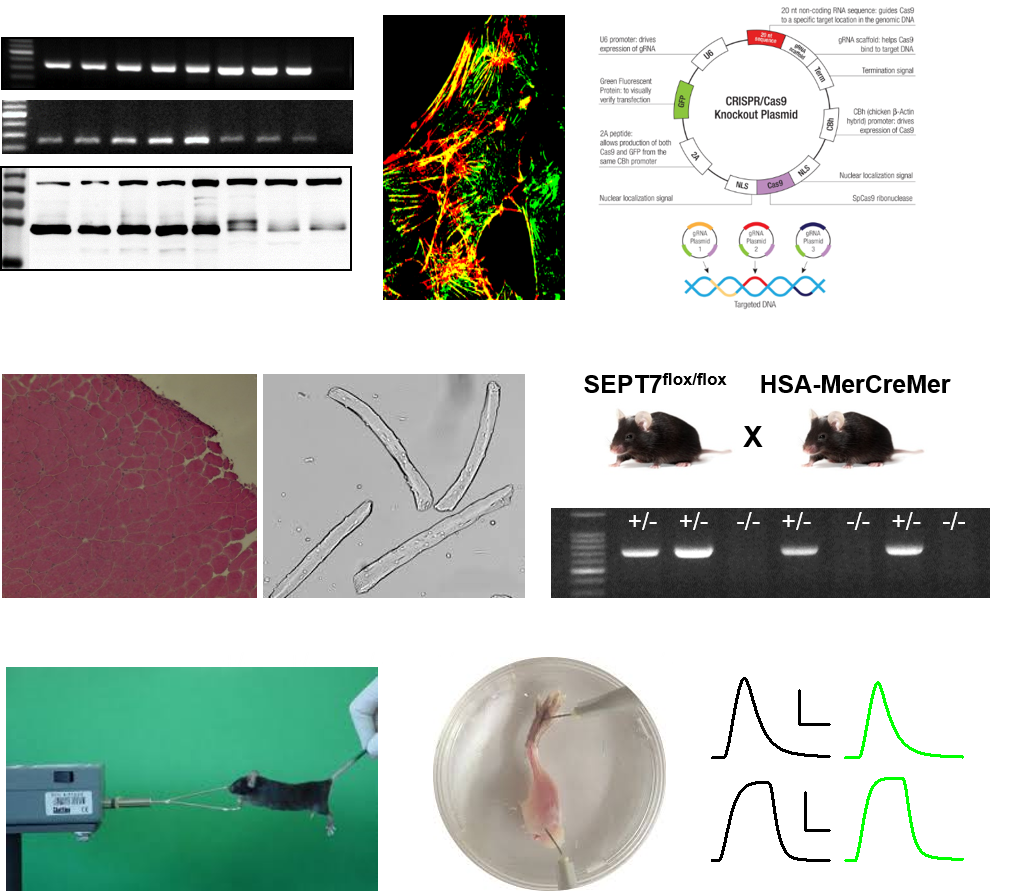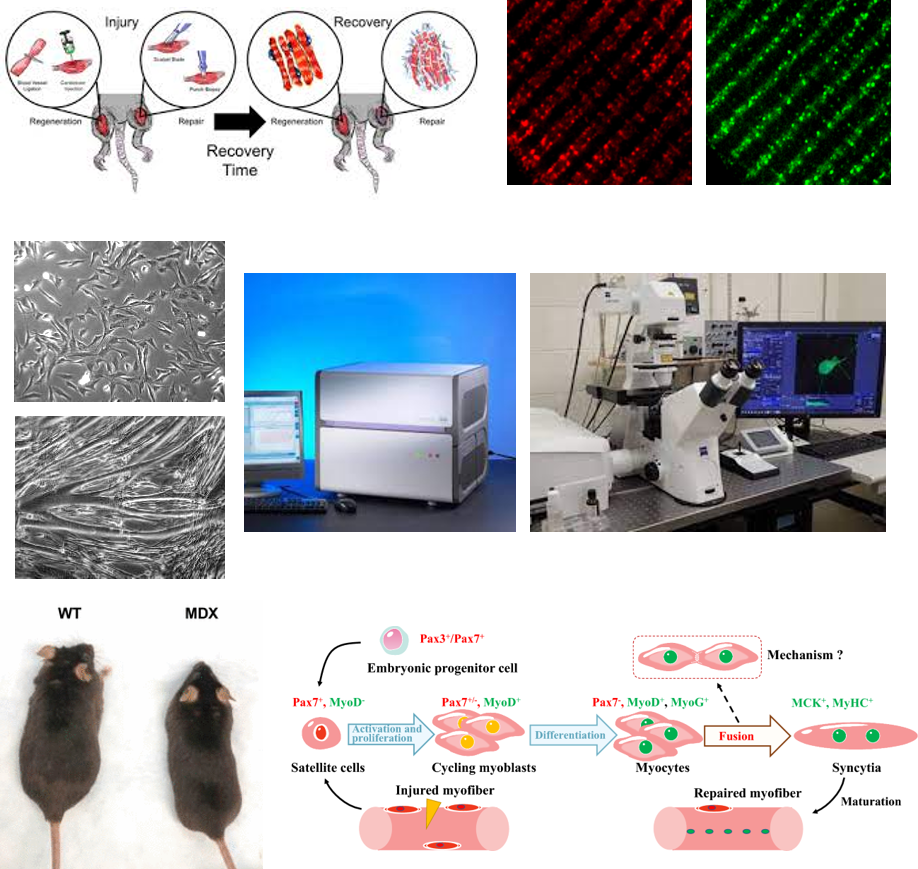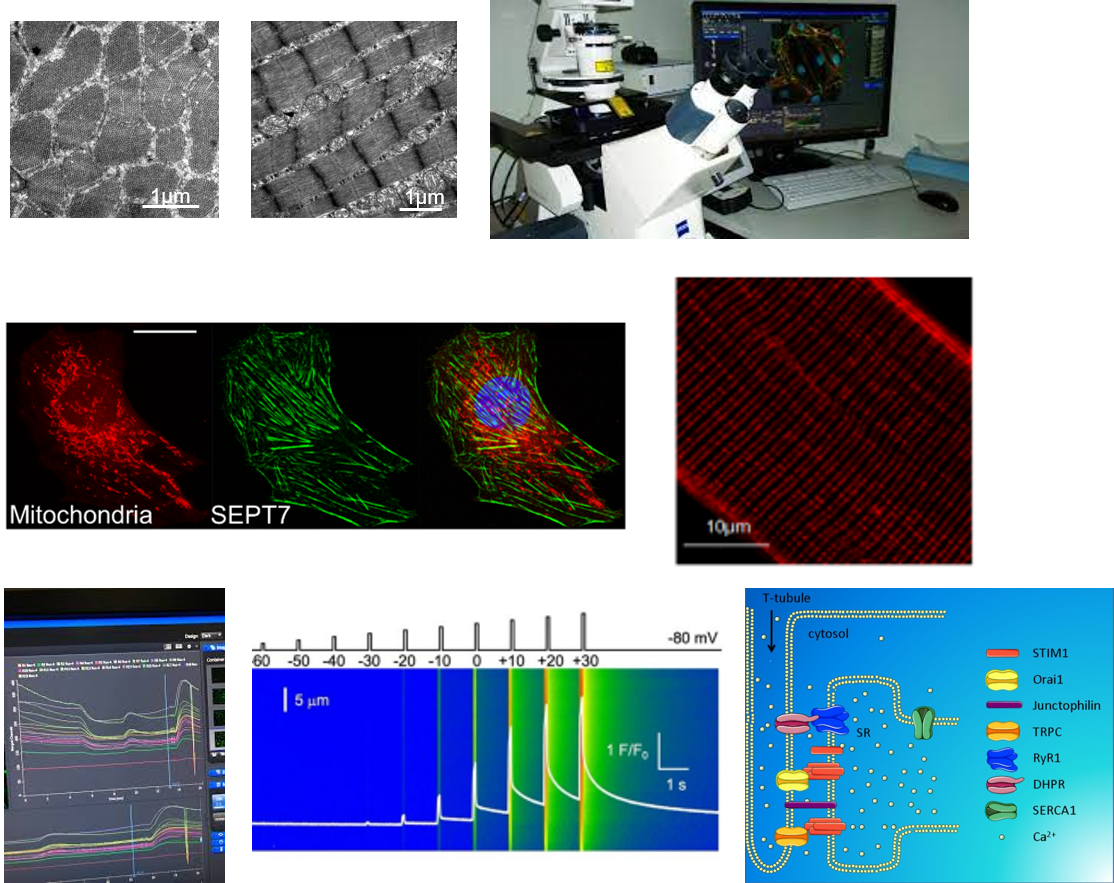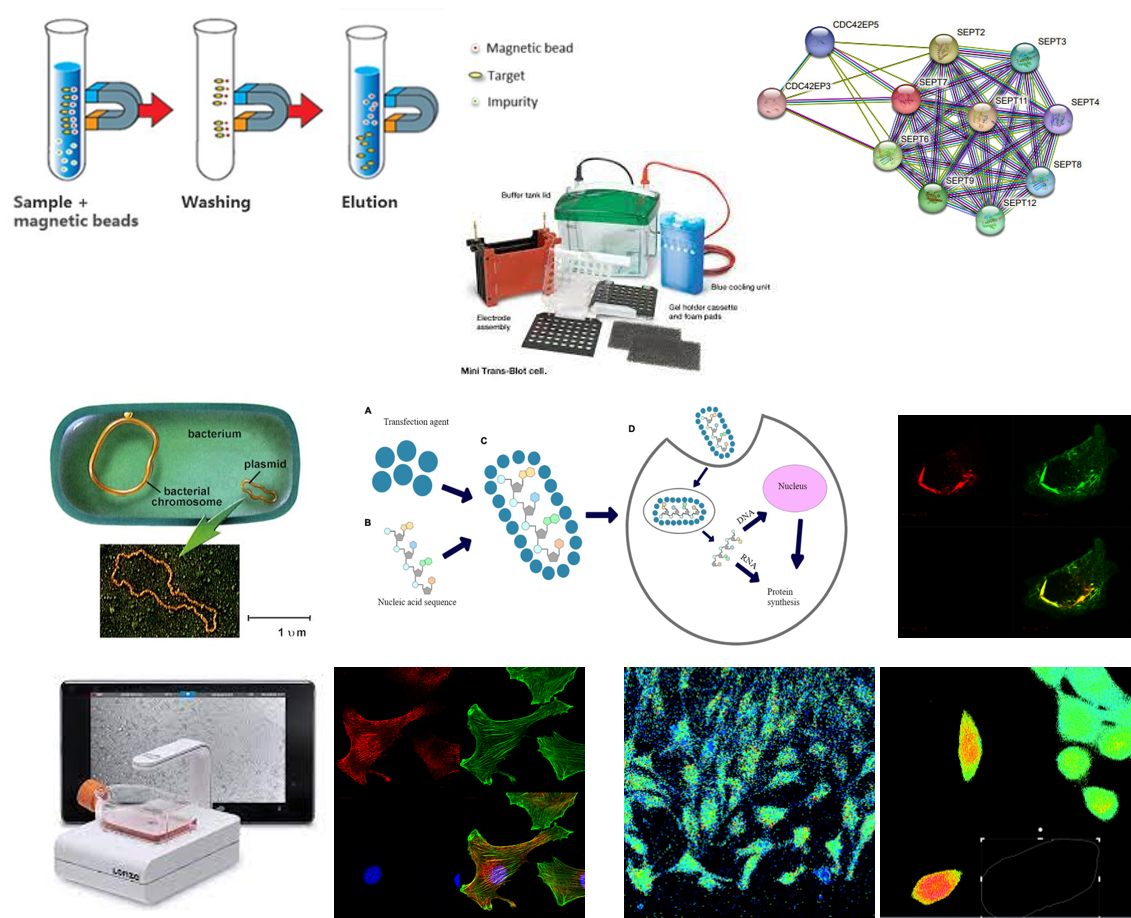The research group investigates the role of Septin7 protein in the regeneration of skeletal muscle between November, 2021 and October, 2025 in the framework of project (137600-K) supported by NKFIH. In this project, we are looking for answers to the following specific questions:

- 1.Examination of the expression of cytoskeletal septin proteins in muscle-derived cell cultures.
Applied methods: cell culture, viability and proliferation tests, RNA and protein isolation, Western blot, RT-PCR and qPCR, immunocytochemistry, confocal microscopy, shRNA-induced gene silencing, gene modification with the Crispr/Cas9 method, overexpression of proteins using expression vectors, propagation of plasmids is competent mediated by bacteria.
- 2.Examination of the expression of cytoskeletal septin proteins in mammalian skeletal muscles.
Applied methods: preparation of skeletal muscles from rodents, RNA and protein isolation, Western blot, RT-PCR and qPCR, preparation of frozen and paraffin-embedded muscle samples and sections for immunohistochemistry, isolation of individual muscle fibers after enzymatic digestion, immunocytochemistry, confocal microscopy, tissue-specific gene modification Cre/Lox method, genotyping from isolated DNA, overexpression of proteins using expression vectors after electroporation.
- How does reduced Septin7 protein expression affect in vivo and in vitro muscle performance?
Applied methods: in vivo measurements (Grip test, voluntary running test), examination of contractions induced by electrical stimulation on isolated skeletal muscles.
- Determination of the role of the septin7 protein in muscle regeneration in control and Septin7 modified mice.

Applied methods: regeneration from muscle injuries induced by BaCl injection, preparation of skeletal muscles from rodents, RNA and protein isolation, Western blot, RT-PCR and qPCR, preparation of frozen and paraffin-embedded muscle samples and sections for immunohistochemistry, immunocytochemistry, confocal microscopy, examination of regeneration markers, molecular biology methods.
- Detection of Septin7 protein expression during differentiation and maturation.
Applied methods: cell culture, skeletal muscle preparation, preparation of RNA and protein samples, Western blot, qPCR, immunocytochemistry, confocal microscopy.
- Studying the role of septin7 protein in muscle regeneration in MDX mice, a mouse model of Duchenne muscular dystrophy.
Applied methods: generation of regeneration-inducing muscle injuries by BaCl injection, preparation of skeletal muscles from rodents, RNA and protein isolation, Western blot, RT-PCR and qPCR, preparation of frozen and paraffin-embedded muscle samples and sections for immunohistochemistry, immunocytochemistry, confocal microscopy, examination of regeneration markers, molecular biology methods.
- The effect of Septin7 gene modification on the structure and function of skeletal muscles.
Applied methods: preparation of skeletal muscles for electron microscopy, preparation and processing of transmission EM images, immunocytochemistry, measurement of ion currents with voltage clamp technique, intracellular calcium concentration measurements using fluorescent calcium-sensitive dyes. 
- Effect of reduced Septin7 expression on mitochondrial morphology and function in cell cultures and skeletal muscle.
Applied methods: labelling of mitochondria with special dyes, immunocytochemistry, confocal microscopy, measurement of membrane potential using dyes, RNA and protein isolation, Western blot, qPCR, functional testing of mitochondrial complexes with the Seahorse measurement system and complex-specific assays.
- Exploring the role of cytoskeletal septins, primarily Septin7, in skeletal muscle calcium homeostasis.
Applied methods: RNA and protein level tests for proteins with a regulatory role in the electromechanical coupling (e.g. STIM1, Orai1), intracellular calcium concentration measurements on individual isolated skeletal muscle fibers with a CoolLed system and confocal microscope, application of fatigue protocols and electrophysiological examination of ion currents, immunocytochemistry.
- Studying the protein relationships of Septin7 in muscle-derived cell lines and mammalian skeletal muscle.
Applied methods: cell culture, preparation of skeletal muscles and individual fibers, Western blot, immunocytochemistry, preparation and examination of co-immunoprecipitation samples by mass spectroscopy.
- Examination of the expression of cytoskeletal septins in human muscle samples from myopathic patients.
Applied methods: RNA isolation, qPCR, immunohistochemistry.
- Examination of the expression of fluorescently labelled Septin7 protein in cell cultures and skeletal muscle.
Applied methods: bacterial transformation, plasmid isolation from bacteria, cell culture, lipid-mediated transfection, electroporation, immunocytochemistry, confocal microscopy.
- Studying the role of Septin7 in the migration of myogenic cells.
Applied methods: cell culture, examination of migration using Cytosmart and OperaPhenix systems, determination of migration parameters using MatLab software, preparation and processing of RNA and protein samples with Western blot and qPCR, immunocytochemistry, confocal microscopy, intracellular calcium measurement with fluorescent dyes.